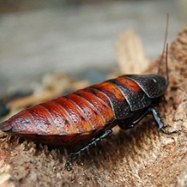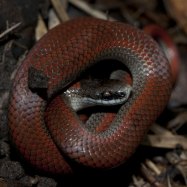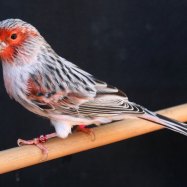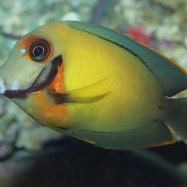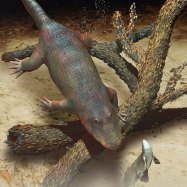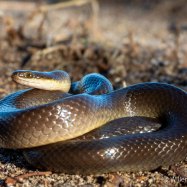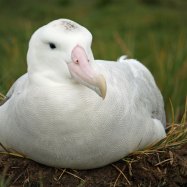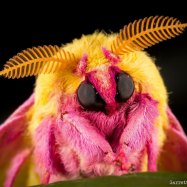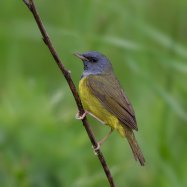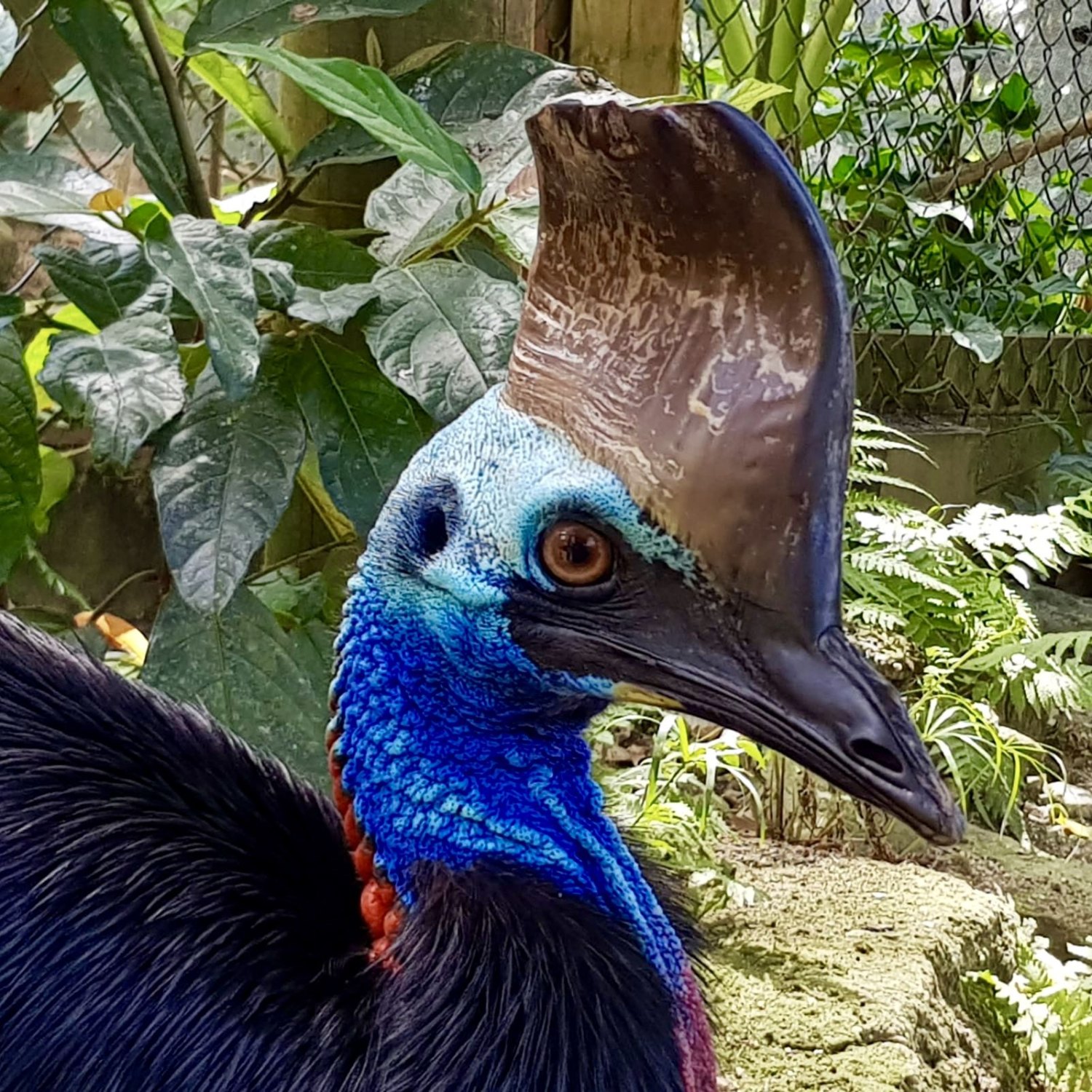
Cassowary
1.5 to 2 meters (4.9 to 6.6 feet)
The Cassowary, found in Northern Queensland, is a majestic flightless bird with a unique feature- a casque-like structure on its head. Standing at 1.5 to 2 meters long, it is one of the largest birds in the world and an important part of the Casuariidae family. Encounter this unique animal in the wild and witness its impressive body shape firsthand. #Cassowary #NorthernQueensland #flightlessbird #wildlife #naturelovers
Animal Details Summary:
Common Name: Cassowary
Kingdom: Animalia
Habitat: Tropical rainforests, mangroves, and grasslands
The Mighty Cassowary: A Flightless Wonder of the Tropical Rainforests
In the lush and dense tropical rainforests of northeastern Australia, New Guinea, and eastern Indonesia, lives a creature that can only be described as a prehistoric marvel. With its striking black plumage and brilliant blue skin, the cassowary stands tall and proud, a true king of its domain.This magnificent bird belongs to the order Casuariformes and is scientifically known as Casuarius casuarius. But to most, it is simply known as the cassowary Cassowary. Belonging to the kingdom Animalia and the phylum Chordata, this avian marvel is a member of the family Casuariidae.
Cassowaries are found in these tropical regions, specifically in the northern parts of Queensland, Australia. Despite being native to this country, cassowaries are also found in New Guinea and eastern Indonesia, making them a truly unique and special species.
The Habitat of the Cassowary
One of the most fascinating aspects of the cassowary is its habitat. These amazing birds can be found in various types of environments, such as tropical rainforests, mangroves, and even grasslands. However, they are most comfortable in lush and dense rainforests where they can easily hide and blend in with their surroundings.Their preferred habitats are also home to a diverse range of fauna, making it an ideal location for the omnivorous cassowary to thrive. With such abundance and variety of food, these birds do not have to travel far to find their next meal.
Feeding Methods of the Cassowary
Cassowaries are omnivorous and have a varied diet that consists of fruits, insects, small creatures like snakes and frogs, and even the occasional small mammal Camel. They have also been observed eating carrion and scavenging through garbage dumps near human settlements.However, the most interesting part of their feeding habits is their love for fruits. Unlike other birds, cassowaries do not regurgitate seeds or digest them completely. Instead, they pass through their digestive system and are dispersed throughout their habitat, contributing to the growth and diversity of the flora.
The Cassowary's Appearance
What truly sets the cassowary apart from other birds is its appearance. Standing at an impressive height of 1.5 to 2 meters (4.9 to 6.6 feet), they are the second heaviest and third tallest bird in the world, only surpassed by the ostrich and emu, respectively.Their feathered body is predominantly black, with a vibrant and iridescent blue coloring on their neck and head. This striking blue color is caused by structural coloration, where the light is diffracted and scattered by specialized cells in their skin, giving them a unique shimmer.
Another distinctive characteristic of the cassowary is the casque, a large and bony structure on top of their head. This casque, which can measure up to 15 centimeters (6 inches), provides protection and a sound chamber for their deep booming calls. The size and shape of the casque also vary depending on the gender of the bird, with females having larger casques than males.
The Cassowary's Behavior and Reproduction
Despite their impressive size and intimidating appearance, cassowaries are generally shy and solitary creatures. They are also excellent swimmers and can run at speeds of up to 30 miles per hour, making them quite elusive in their natural habitat.During the breeding season, however, male cassowaries become fiercely territorial and will defend their nesting site from any potential threats. Female cassowaries, on the other hand, are responsible for building the nest and incubating the eggs, which can take up to two months to hatch.
Cassowaries are also known for their unique courtship rituals, often involving a display of power and agility. They use their powerful legs to kick and jump, producing low-pitched rumbling sounds. These rituals are not only for attracting a mate but also for establishing a dominance hierarchy among males.
Threats to the Cassowary
Despite their impressive size and strength, cassowaries are facing numerous threats in their natural habitats. The destruction of their rainforest homes for agricultural purposes, as well as illegal poaching and hunting, have led to a significant decline in their population.Moreover, the cassowary is also considered to be a keystone species, meaning they play a crucial role in maintaining the balance of their ecosystem. Their disappearance could have a ripple effect on the survival of other species within their habitat.
In Conclusion
The cassowary is a truly unique and magnificent creature, with its striking appearance and fascinating behaviors. From its impressive size, vibrant coloration, and curious nesting habits, it is clear that this avian wonder deserves to be admired and protected.As we continue to learn more about the cassowary, we are reminded of the importance of conservation and preserving the diversity of our planet's wildlife. Let us hope that future generations will also have the opportunity to witness the grandeur of this flightless wonder of the tropical rainforests.

Cassowary
Animal Details Cassowary - Scientific Name: Casuarius casuarius
- Category: Animals C
- Scientific Name: Casuarius casuarius
- Common Name: Cassowary
- Kingdom: Animalia
- Phylum: Chordata
- Class: Aves
- Order: Casuariformes
- Family: Casuariidae
- Habitat: Tropical rainforests, mangroves, and grasslands
- Feeding Method: Omnivorous
- Geographical Distribution: Northeastern Australia, New Guinea, and eastern Indonesia
- Country of Origin: Australia
- Location: Northern Queensland
- Animal Coloration: Black feathers with vibrant blue skin on the neck and head
- Body Shape: Large and flightless bird with a tall, casque-like structure on the head
- Length: 1.5 to 2 meters (4.9 to 6.6 feet)
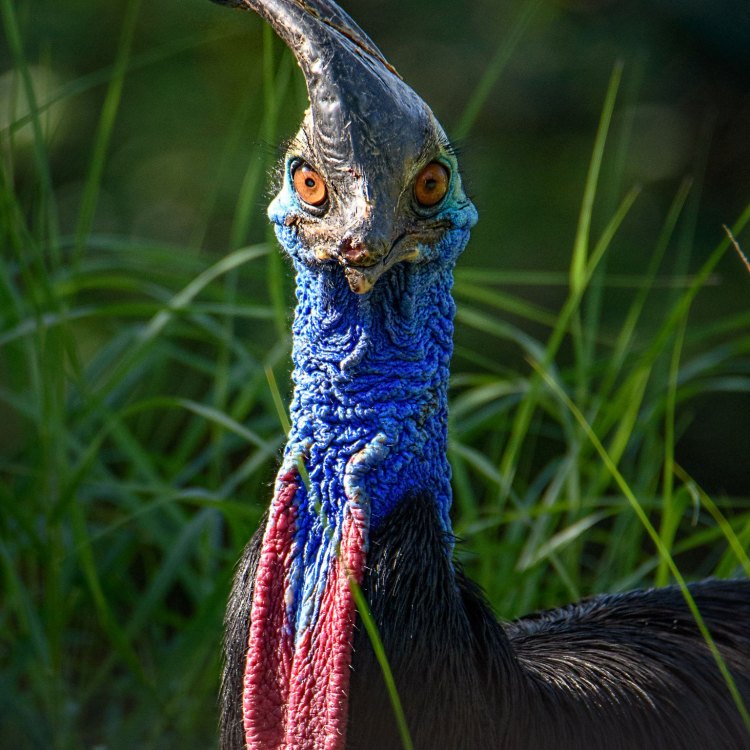
Cassowary
- Adult Size: Males: approximately 30 to 40 kilograms (66 to 88 pounds), Females: approximately 58 to 76 kilograms (128 to 168 pounds)
- Average Lifespan: Around 40 to 50 years
- Reproduction: Sexual
- Reproductive Behavior: Females are larger than males and lay 3 to 8 large, green eggs in a ground nest
- Sound or Call: Deep booming, drumming calls
- Migration Pattern: Non-migratory
- Social Groups: Solitary or in small family groups
- Behavior: Can be aggressive and territorial, known to charge and kick when threatened
- Threats: Habitat loss, hunting, and road collisions
- Conservation Status: Vulnerable
- Impact on Ecosystem: Important seed dispersers in their habitat
- Human Use: Hunted for meat, feathers, and bones
- Distinctive Features: Large size, casque-like structure on the head, bright blue skin
- Interesting Facts: 1. Cassowaries are considered one of the most dangerous birds in the world. 2. They are excellent swimmers and can cross rivers and creeks. 3. The casque on their heads is thought to be used for communication and amplification. 4. Cassowaries have a unique digestive system that allows them to eat large fruits whole. 5. They are an important symbol in Aboriginal culture.
- Predator: Humans, dogs, and feral pigs
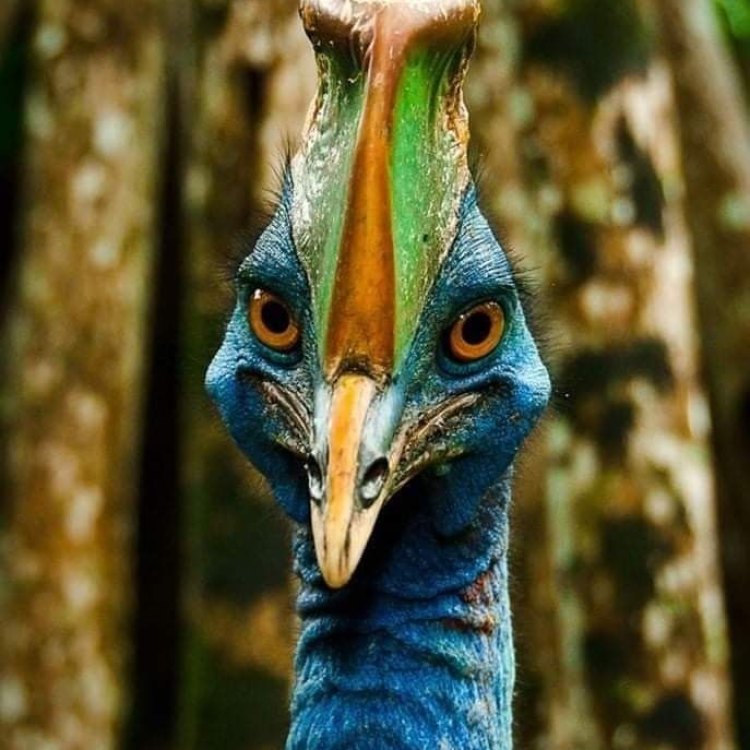
Casuarius casuarius
The Enigmatic Cassowary: A Giant, Blue-Skinned Bird With a Dangerous Reputation
In the dense rainforests of Australia, a large, blue-skinned bird roams the undergrowth. With its tall, glossy black feathers and an unmistakable casque-like structure on its head, the cassowary is hard to miss. However, despite its impressive appearance, this unique bird has a dangerous reputation.The cassowary (Casuarius casuarius) is a flightless bird native to the tropical rainforests of Australia, New Guinea, and some surrounding islands PeaceOfAnimals.Com. It belongs to the family Casuariidae, which also includes the emu and kiwi. There are three species of cassowary: the southern cassowary, the northern cassowary, and the dwarf cassowary, all of which are found in different regions of Australia.
One of the most distinctive features of the cassowary is its size. Adult males can weigh between 30 to 40 kilograms (66 to 88 pounds) while females can reach an astounding 58 to 76 kilograms (128 to 168 pounds). This makes them one of the largest birds in the world, second only to the ostrich.
But size is not the only impressive aspect of the cassowary. They also have an average lifespan of 40 to 50 years, making them one of the longest-living birds. Their reproductive behavior is also noteworthy. Cassowaries engage in sexual reproduction, and it is the females who are larger than males, a unique trait in the animal kingdom Cobia Fish.
Female cassowaries are also responsible for laying eggs in a ground nest. They can lay 3 to 8 large, green eggs at a time, which they incubate for around 50 days. After hatching, the chicks stay with their mother for up to nine months, during which time she fiercely protects them from any potential threats.
One of the most distinctive features of the cassowary is their deep booming, drumming calls. These calls are used for communication and can be heard over long distances, making them an essential way to keep in touch in the dense rainforest.
Unlike many bird species, cassowaries are non-migratory. They typically stay within their home range, which can span up to several kilometers. However, they can cover large distances in their search for food and water, which brings us to their behavior.
Cassowaries are solitary or can be found in small family groups consisting of a mother and her offspring. They are territorial and can become aggressive when they feel threatened. With powerful legs and sharp claws, they can charge and kick with force, which makes them one of the most dangerous birds in the world.
Unfortunately, this aggressive behavior has caused conflicts between cassowaries and humans. As their habitat is increasingly being destroyed due to human activities like logging and development, cassowaries are forced to move into more urban areas, leading to human-cassowary encounters. In some cases, these interactions have resulted in serious injuries, highlighting the need for conservation efforts.
Apart from habitat loss, cassowaries also face threats from hunting and road collisions. In some cultures, cassowaries are hunted for their meat, feathers, and bones, which are used in traditional ceremonies and crafts. This, coupled with the fact that they are slow-moving and often cross roads, makes them vulnerable to vehicular accidents.
As a result, cassowaries are currently listed as a vulnerable species by the International Union for Conservation of Nature (IUCN). To protect them, several conservation efforts are in place, including habitat preservation, education programs, and efforts to reduce human-cassowary conflicts.
But why is the conservation of the cassowary so crucial? Apart from being a unique and beautiful bird, cassowaries play a vital role in their ecosystem. They are considered important seed dispersers in their habitat. Their large size and unique digestive system allow them to eat large fruits whole, and as they move through the forest, they spread seeds across the landscape, aiding in forest regeneration.
In addition to their ecological importance, cassowaries also hold significant cultural significance. In Aboriginal culture, the cassowary is seen as a spiritual animal, representing the connection between the land, people, and the ancestors. They are often depicted in traditional art and dances, and their feathers and bones are used in ceremonies and rituals.
But even with their enormous size and powerful appearance, the cassowary holds some surprising abilities. They are excellent swimmers and have been observed crossing rivers and creeks, sometimes even diving underwater to escape predators.
Their casque, which may seem like a purely decorative feature, serves a vital purpose. While its exact function is still unknown, it is thought to be used for communication and amplification of their calls.
Another interesting fact about cassowaries is that they are one of the few bird species that have a helical inner ear. This unique adaptation allows them to have superior hearing, making them excellent at detecting potential threats in the dense rainforest.
Despite being formidable creatures, cassowaries do have natural predators in the wild, including humans, dogs, and feral pigs. To survive, they often use their size and aggression as a defense mechanism. However, with conservation efforts in place and increased awareness about their importance, we can hope to see these enigmatic birds thrive in their natural habitats.
In conclusion, the cassowary is a giant, blue-skinned bird with an impressive list of unique features. From their size and reproductive behavior to their role in their ecosystem and cultural significance, they truly are one of a kind. While their aggressive nature may give them a dangerous reputation, it is up to us to ensure their survival and appreciate them for the iconic and fascinating creature that they are.
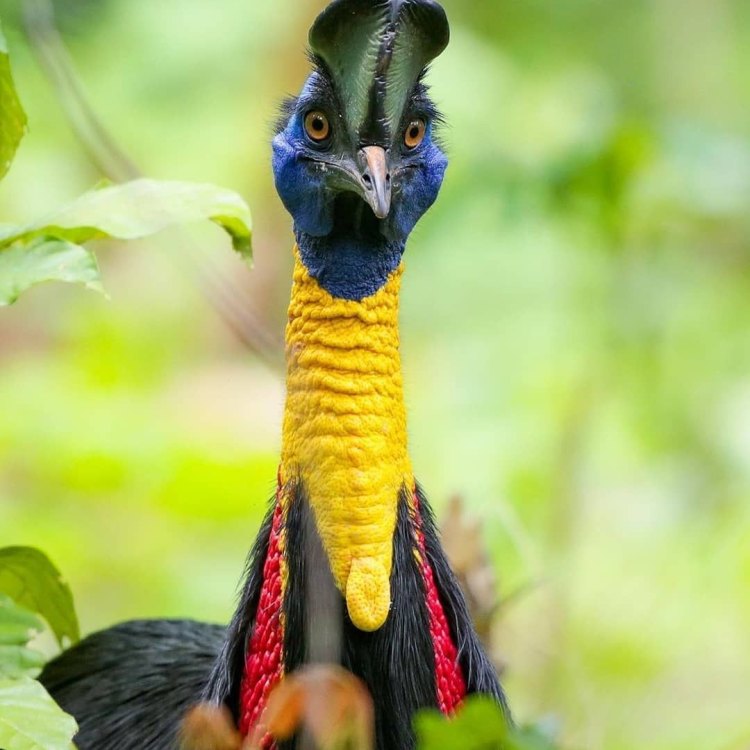
The Mighty Cassowary: A Flightless Wonder of the Tropical Rainforests
Disclaimer: The content provided is for informational purposes only. We cannot guarantee the accuracy of the information on this page 100%. All information provided here may change without prior notice.

